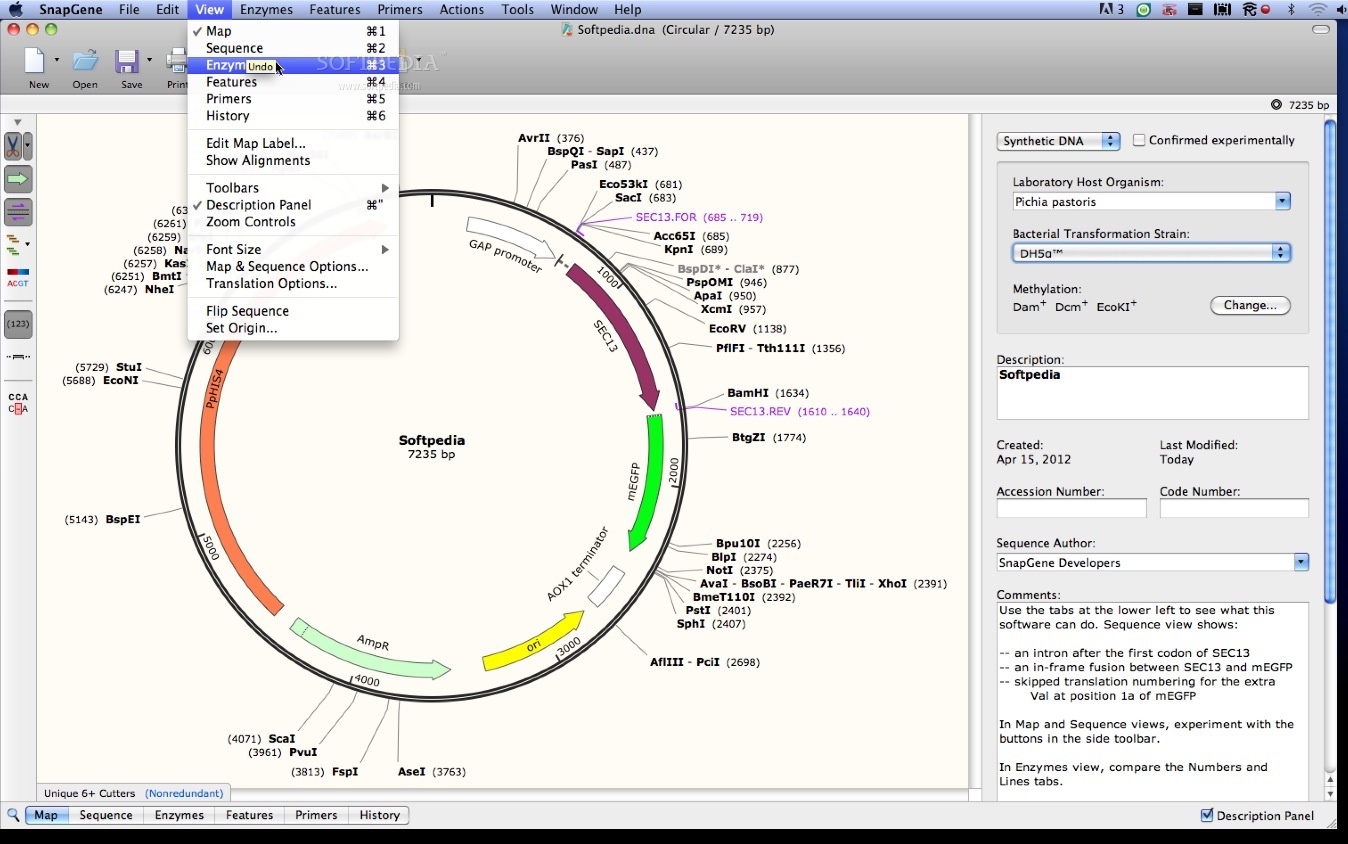

This was due to errors in planning and could then be tracked via SnapGene.Īs soon as the source of the error was found, the sequence was changed, new primers were ordered and In theses cases, the fragment was not inserted, or Unfortunately, this was sometimes not the case. Reached, the finished plasmid was sent for sequencing to check the correct base sequence, the Also, at this point onlyĬorrect constructs could lead to an amplification of the desired length. After this was validated, test PCRs were performed. Only the correctly cloned plasmid could lead to the correct band lengthĪnd arrangement. To verify the correct incorporation of the individual fragments and the success of the reaction, testĭigestions were carried out. HIFI DNA Assembly Kit, the compatibility of the fragments to each other and to the backbone must be In order to perform the reaction with the The backbone, were amplified by PCR and suitable primers. The fragments, which should be arranged in different ways within The plasmids were multiplied, isolated and cut via restriction digestions. PmRFP_a_tubulin_IRES_puro2b was a gift from Daniel Gerlich PENTR221-IL6.Pro was a gift from Peter Jon Nelson Table 1: Used Plasmid with information about the manufacturer and the fragment of interest.īBa_K3338000 was a gift from Elliot Meyerowitz The individual plasmids we have chosen can be seen in the table below. Obtain the individual sequences, which should be present in the constructs, the plasmids were For this purpose, the sequences were searched fromĪddgene, assembled via SnapGene and prepared for the DNA HIFI Assembly reaction of NEB. Here we proceeded schematically stepįirst the individual constructs were designed. Short training period the first constructs could be designed.
Period 2 sequence snapgene software#
To use and learn the software of SnapGene, which was kindly provided to us by SnapGene. Furthermore, the right software for planning of the cloning had to be found. As we had no experience withīBa_K3338000 and LPS-dependent gene expression, we used different papers to get a first well-founded Of literature research was conducted at the beginning of the project. In order to successfully implement our idea of the biological sensor and the selected design, a lot Please follow us to Proposed Implementation and Proof of Concept to learn how we utilized both concepts orīack to Design to understand the initial design ideas. For more information visit the Parts link and Registry for a detailed list. Most used parts are listed within this site as tooltip or link. After that, we give more details on the engineering of the microfluidic measuringĬhamber to identify magnetized cells. As a result, your scientists can switch entirely to SnapGene without losing data, or can continue using legacy software together with SnapGene without conflict.Īs a service to the research community, SnapGene provides tutorial videos along with a library of carefully annotated plasmids, along with guides to popular cloning methods.Engineering of our sensor. SnapGene supports a host of file formats.SnapGene automatically generates a record of every sequence edit and cloning procedure, so you won’t lose track of how a construct was made, even after a lab member leaves.
Period 2 sequence snapgene free#
dna files can be opened by the free cross-platform SnapGene Viewer, enabling you to share richly annotated maps and sequences with colleagues.


 0 kommentar(er)
0 kommentar(er)
